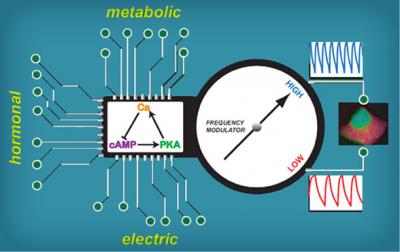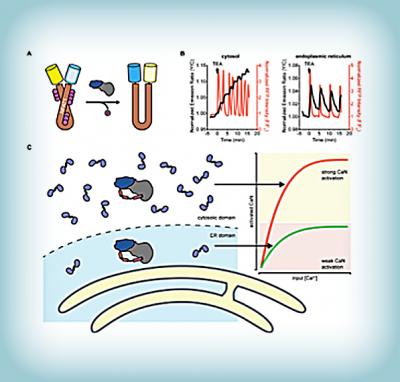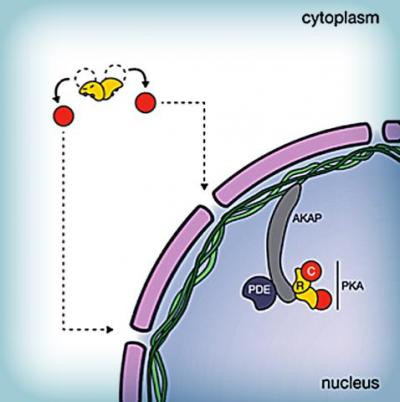Discovery of an oscillatory circuit in insulin-secreting β cells
An oscillatory circuit that interlinks Ca2+, cAMP and PKA to integrate multiple input signals and coordinate key signaling activities via frequency modulation, thereby regulating complex functions in a context-dependent manner.



